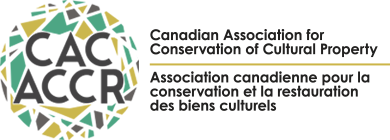J.CAC VOLUME 42 (2017)
Practical Electrochemistry for Conservators and Conservation Scientists: Part II – Characterizing and Treating Corroded Metals
Electrochemical techniques can be used to characterize corrosion on a metal object and to reduce the corrosion either to a different compound or back to the metallic state. These techniques involve the flow of electrical current, and so are more involved than the measurement of the potential between an object and a reference electrode in a two-electrode cell. Information is given here for techniques where current flows, including the choice of a third electrode (the counter electrode) and the additional equipment needed (a power supply or potentiostat). Examples are given of methods varying the potential (potentiodynamic), holding the potential constant (potentiostatic), or holding the current constant (galvanostatic). The following aspects are discussed: identifying the features associated with oxygen reduction, associating the peaks in potentiodynamic scans with specific compounds in the corrosion, choosing the potential for treating an object, and estimating the amount of corrosion on an object or a test sample.
Download: JCAC42 Selwyn & McKinnon II